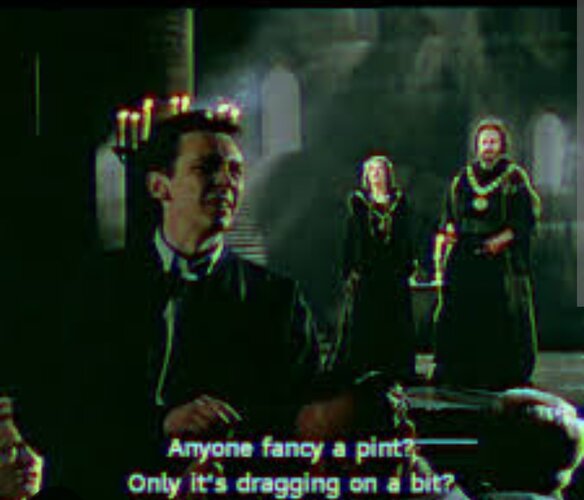Pardon me, binged the thread.
first, I want to say Holy Crap this book is way cheaper than it has any right to be. I was fully expecting something like the books from Headstamp Publishing, which tend to run $75-100 US.
Now, on to comments.
Some may find this nitpicking but as a chemical engineer working at an American design company (retired now) I have seen through the years many mistakes being made with gallons as most of my coworkers, especially the younger ones, automatically assume that a gallon is 3.785 liters, even if it is mentioned in a clearly British document. I therefor have always urged coworkers to be careful when reading a document, and be clear which gallons one means when writing about them.
The same problem occurs in my profession with pressure units. Some people automatically assume that psi (or kg/cm2, or bar, or kpa, or Mpa, or ....) means absolute pressure, while others automatically assume it is gauge pressure. I have always insisted on my projects that everybody state either psig or psia, not psi, also clients. Assumption is the mother of all f#ck-ups.
In the top left corner of the two page preview there is a quote in which psi is mentioned. The numbers are big so in this particular case it does not really matter whether psig or psia is meant.
However there may be pressure data in the text of your book where psi (or kg/cm2, or bar, or kpa, or Mpa, or ....) are mentioned and where the number is small enough that it does make a difference whether psig or psia is meant.
Maybe you can think about that and let us know how to interpret pressure data without an a or g in your text before we start reading your undoubtedly interesting book.
"Manifold Pressure" is always absolute, "boost pressure" is almost always gauge.
They're terms of art in the aircraft world.
For obvious reasons, the book does not go into jet engine development. Nevertheless, I got the feeling on reading some of the detail stuff on superchargers and turbochargers that it would not have been at all difficult to slide gently off into a side discussion of the impact of supercharger/turbocharger experience on early jet work (particularly the axial turbocharger the Germans were playing with).
What the?!? Okay, I want more details on this!
Nothing too intense but enough to put off most casual readers. The whole book isnt all like this, but perhaps 1/3 of it is. German engineers at the time didnt calculate supercharger output in the same way "we" did, plotting pressure ratio against flow (or corrected flow), instead they chose to use adiabatic work, (H_ad) so a fair bit of the book introduction is explaining for todays compressor engineer what thats all about. It has a couple of advantages, such as if you want to calculate the work of a multi-stage compressor, you just add together the adiabatic work of each stage. Up to a certain altitude, the "meters head" of this unit is "nearly" the same as the equivalent work to counter atmospheric, meters altitude rise - so if you want a supercharger to maintain sea level boost to 8000m, you can design one which produces an adiabatic work of 8000m. That starts not to quite hold true at very high altitudes, but its an interesting "guideline" for the aero engine designer to use.
That's honestly a really useful note, but I don't want to deal with heavy math anymore. I should probably get back in and re-do calculus at some point (did not do enough homework and so did just well enough to pass, but I was a business major so Calc was the last math class I had to take)
And given that useful guideline I can see why the Germans did the math that way.
Page 216 top left: "Maximum boost pressure was 44.2 in of mercury."
Was that 44.2 inch absolute, so +7 psi boost? Or 44.2 inch above 1 atm, so +21.7 psi boost?
I'm not an expert on the Sabre engine, but +7 psi seems low to me and +21.7 psi seems high, so I wonder which is correct here.
Okay, that's
weird to say "boost pressure" and then use absolute units. Normally, "boost" is gauge pressure.
And yes, a 7psi boost really is all they were running back then. War Emergency Power for a Merlin is 61"Hg, ~15psi boost; normal max is ~55"Hg, ~12.5psi boost.
I keep wondering why the early gas turbines failed to accelerate as quickly as late model piston engines and, why the hybrids failed to bridge the gap. I understand materials were a problem until quite late on but I reckon a lot of it came down to political decisions and strategic investment.
Some of that comes down to prop versus jet. I don't have the math to explain why, but props always accelerate faster than jets. Even when the engine in question is a turboprop.
The hybrid engines like the 3350 Turbocompounds came out late in the war or missed it entirely, and did terrible things to engine reliability. The PRTs on the 3350s were sarcastically called "Parts Recovery Turbines" due to the low TBO and extra maintenance they caused.
I have rather a lot on the Orion, but as it never really ended up as much I had to decide to not put it into the book, as if you include all the "nearly" engines it quadruples in length, and its already a telephone directory in size.. so.. anyway.
I think a "director's cut" with all the "nearly" engines would be an awesome electronic copy, it's probably not worth the effort to publish it on paper.
I don’t believe, that the modifications have been well documented and many planes crashed and many racers died. On the other hand, it seems like the unlimited class came to an end and if there is any chance to write a book about it, it is now. No one has to keep their secrets without being able to race.
Racers are gonna race, last I heard was an airport in Wyoming was willing to consider hosting. I want to say Casper? The town hosts a rodeo, so they have a decent number of hotel rooms available for the racers and audience. And the Casper airport has a lack of whiny neighbors trying to get the entire airport shut down, which was the problem at Reno.
The upper sketch is somewhat mysterious, but basically what is being suggested is that under certain flight conditions the exhaust ejector effect produces a higher thrust efficiency compared to a turbo. Here Kosche suggests a mechanical 2 stage blower and a 213J with ultra high valve overlap and exhausts which are shaped to provide thrust. Here the engine is being used in a way which is possibly half-way between a normal piston aero engine and a turboprop in flight-speed/efficiency envelope. The power loss driving the oversized mechanical supercharger would be offset by the fact the flow from the supercharger is leveraged by the fuel chemical energy in the combustion chamber so that a lower amount goes to the prop than usual but a higher amount to exhaust thrust than usual.
I cannot comment on if this was thermodynamically practical or not.
That is a very weird idea... basically using the engine as a not-quite-motorjet?









